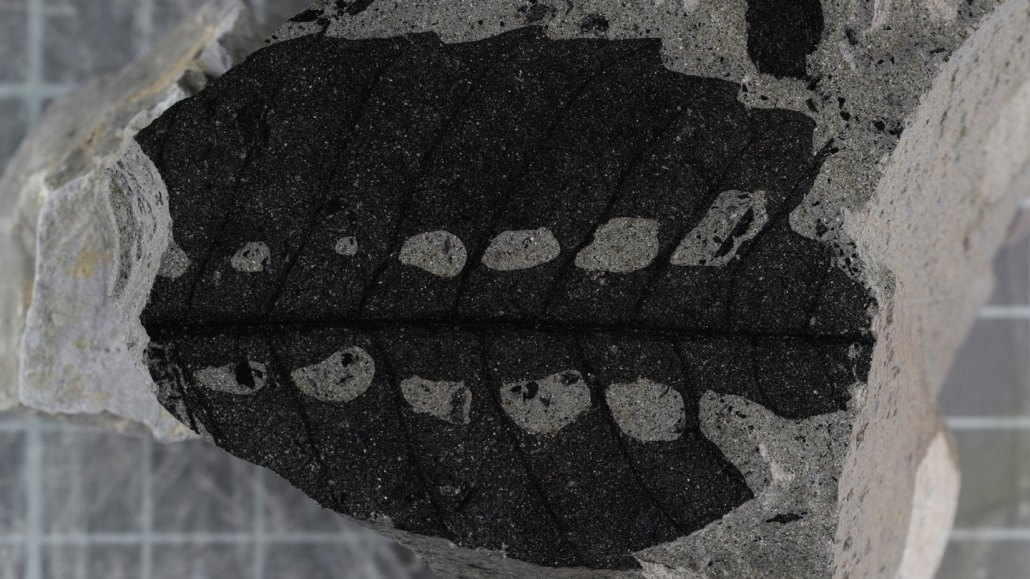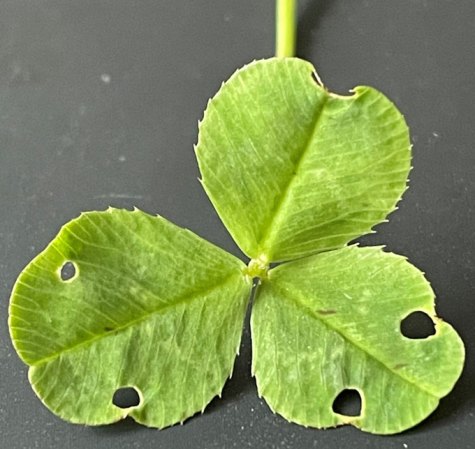Insect bites in plant fossils reveal leaves could fold shut millions of years ago
Flower-producing and seed-producing plants developed the folding ability independently

This symmetrical damage to a fossilized leaf of the extinct plant Gigantonoclea guizhouensis was the result of insects munching on the leaf while it was folded, scientists say.
Z. Feng et al/Current Biology 2023








